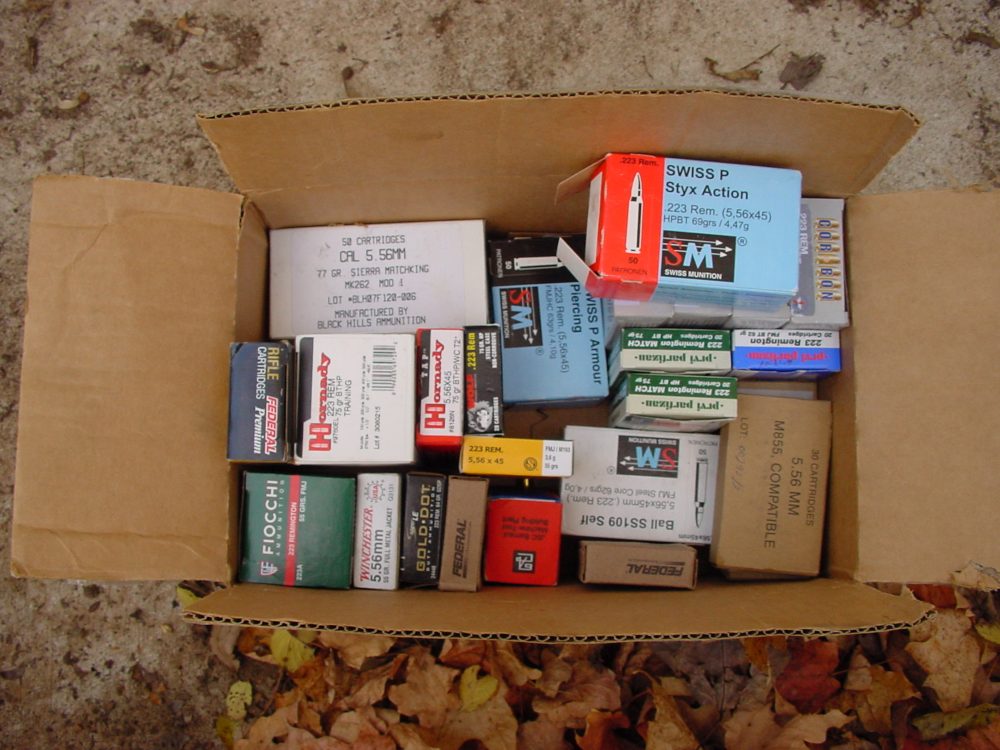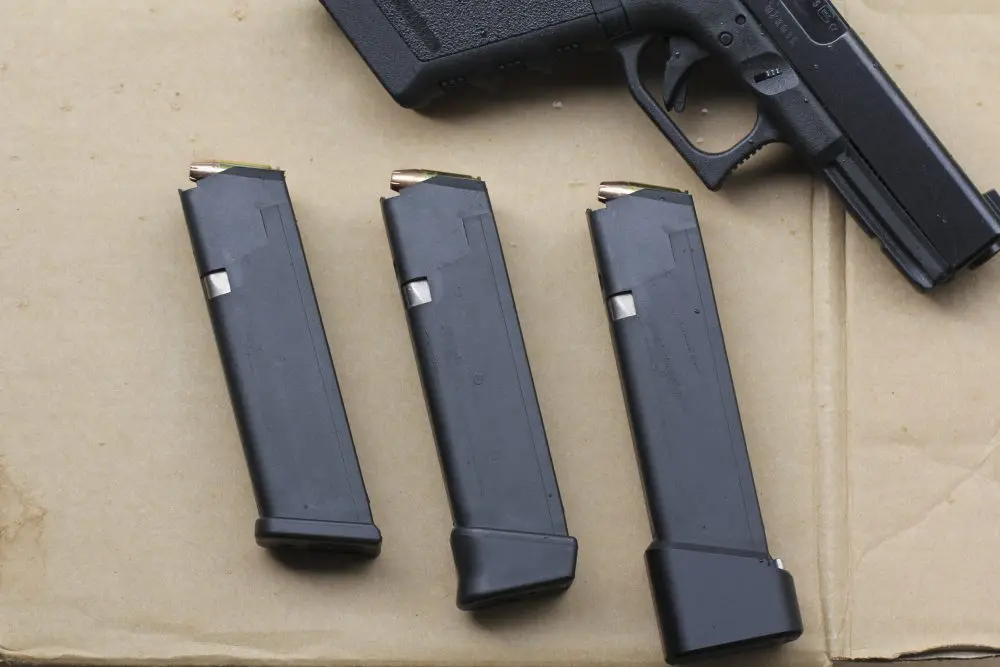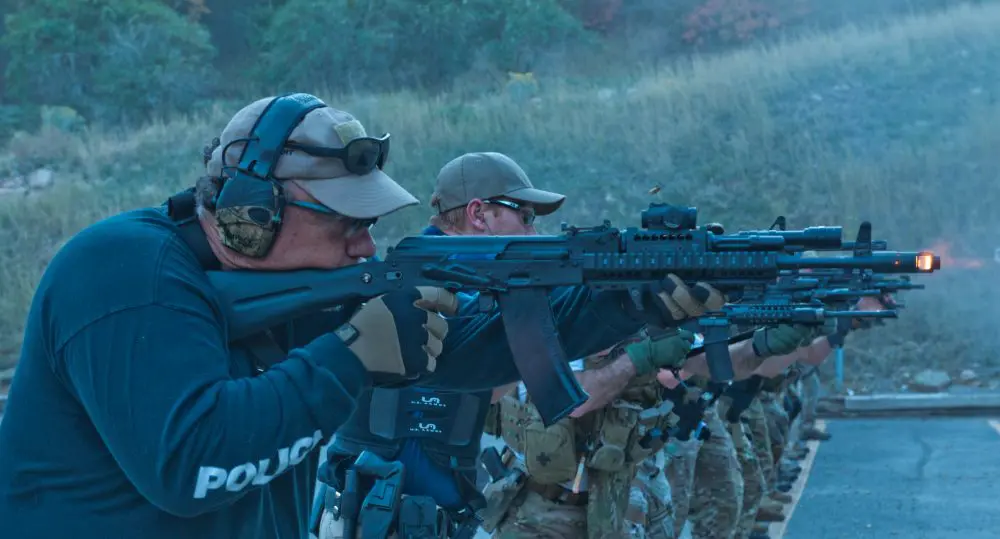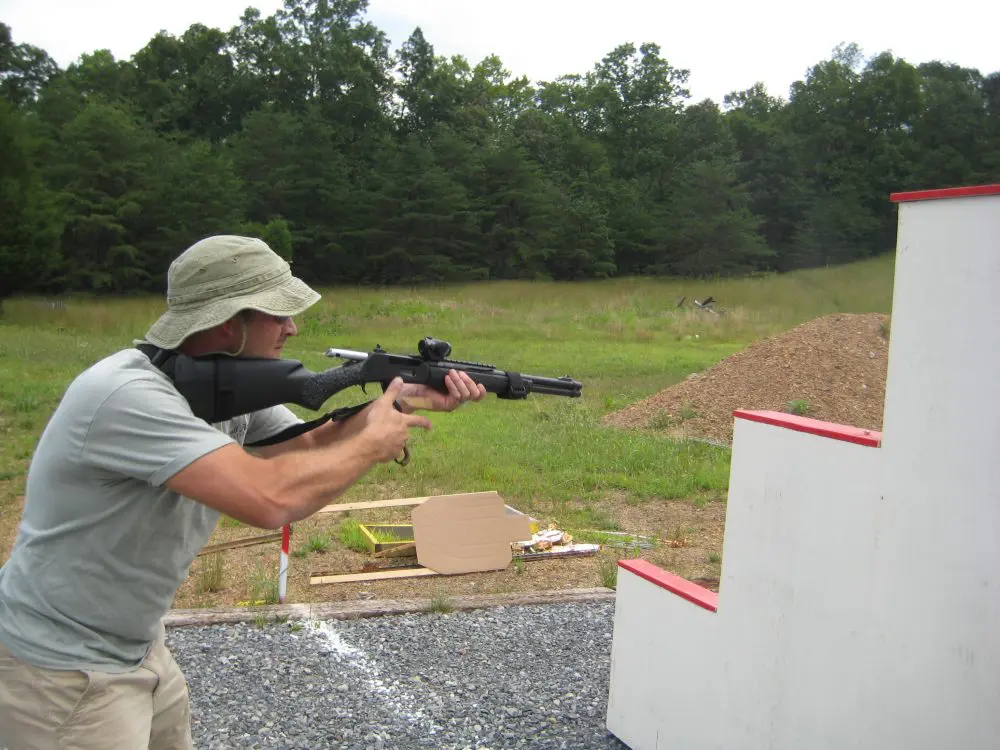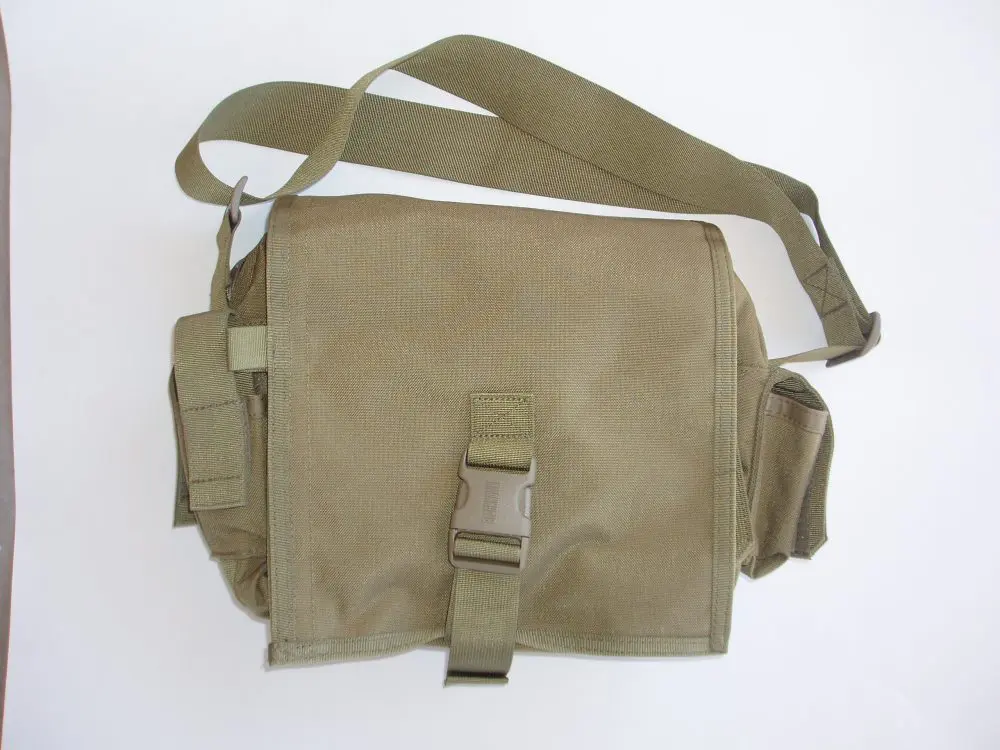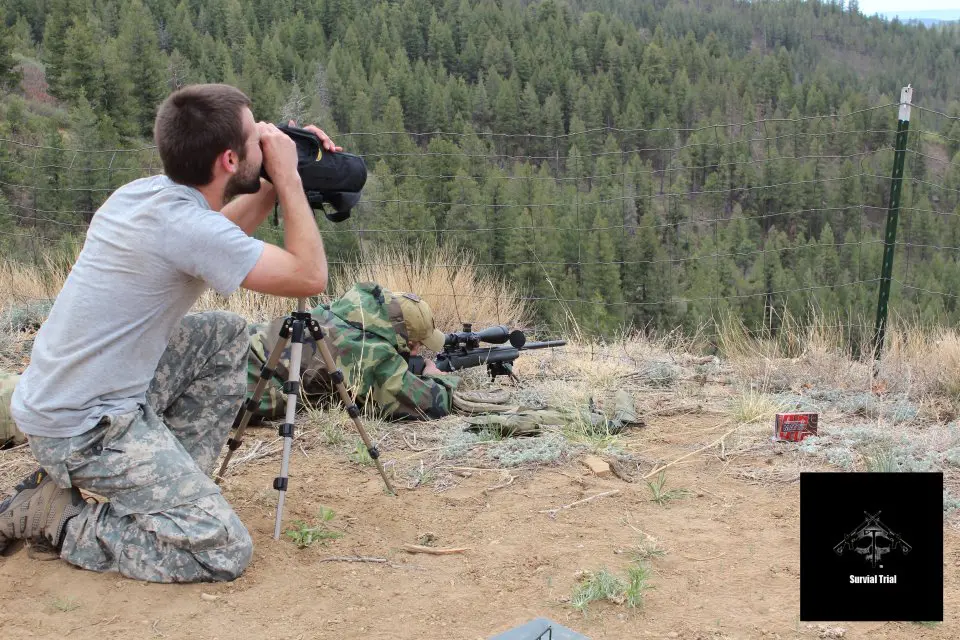Frankengun!
The mere mention of the name is enough to make the simple townsfolk in the village of Ayarr-Fifteenia bolt the doors, shutter the windows, blow out the lamps and huddle, quivering with fear, in the cellar.
Ah, you’re a newcomer to the village and have heard nothing of this abomination? A Frankengun is an AR-15 (usually) that has been thrown together with parts salvaged from various other (often well-used) AR-15s, and/or parts from a manufacturer who looked at an AR-15 one day and said, “Hey, I can make parts that look something like that.” Despite the mad doctor’s best intentions and efforts, the result is often a creature that may outwardly resemble an AR-15, but inside something has gone terribly awry and the end result is often, well, a monster.
But there can be good monsters, too.
I thought that a pair of Frankenguns would be good vehicles for testing various AR-15 aftermarket components and accessories during the season’s training and match shooting. As part of the instructor staff for an Illinois police training organization, I am always on the lookout for guns, ammo and gear that will be of benefit to our students.
Frankenguns: don’t be afraid to experiment and create your own. FG Heavy on top, FG Carbine below.
I also wanted to revisit a few of the items we specifically recommended against in our patrol rifle classes, to make sure we have not been taking our own advice too seriously. Keeping our heads in the sand and missing an innovation that renders our reasoning obsolete would be a disservice to the students.
I did not test and compare several brands and models of each component to try to find the best of its type—that would require a thick book and not a magazine article. “What’s best” is usually a matter of opinion anyway, and dependent upon the individual’s particular needs. Items tested are simply those that were on my want-to-try list.
The two guns were put together to represent two different areas of use for the AR-15: One, a 16-inch carbine, hereafter referred to as FG Carbine, to test accessories relevant to a patrol carbine or defensive-use firearm. The other, a precision-oriented rifle with a 24-inch heavy stainless, free-floated barrel, for wringing the last bit of accuracy out of the ammo tested—FG Heavy.
Sighting setup on FG Carbine: compact and lightweight Zeiss Z-Point red-dot with LaRue Po’Boy 2.5X magnifier on their quick-detach pivot mount. Swing it up into sighting plane for instant magnification; down and out of the way for close and fast shooting. GG&G backup iron sight is less bulky than some, making more room for Po’Boy and better access to charging handle.
Table of Contents
LOWER RECEIVERS
A Magpul lower receiver formed the cornerstone of FG Carbine. Oddly enough, in spite of the many poorly made parts and factory mistakes I have seen and continue to see, I have not seen any lower receiver of any brand in the last 20 years that I would say was “totally crappy.” Some may have a few sharp edges or pinholes a little tight or loose, but I’m just not seeing lowers that have important dimensions missed or features omitted.
Still, the Magpul receiver stands out for its quality manufacture and interesting features. The selector markings are HK-esque pictographs; the magwell is generously chamfered; and the trigger guard is an integral, heavy-duty, machined-in part of the receiver. The bad news: I was very lucky to score one of these as they were more of a manufacturing experiment for Magpul than anything else, and will not be generally available.
On FG Heavy, I used a Noveske lower. It is completely standard but done to perfection.
Top: JP Rifles Tactical bolt carrier group. Note reduced clearance notch for dust cover detent, which will not allow dust cover to close if bolt is 1/16″ or more out of battery. JP’s High Performance bolt is made by Leitner-Wise Defense. Bottom: FG Heavy’s standard Sabre Defence-made unit.
UPPERS AND BARRELS
On FG Carbine I used a new Sabre Defence 16-inch “Government” profile barrel that is skinny under the handguards with the unnecessary (but apparently in demand) M203 grenade launcher mounting cut ahead of the front sight base. It has a 1:9 twist with a chrome-lined chamber and bore, and a true 5.56mm NATO chamber. Sabre makes their own barrels, one of just a few AR-15 manufacturers who do.
In fact, they make them under government contract for a variety of military weapons and were recently awarded a contract to provide M16 rifles to the Navy and Marine Corps. The barrel I used was a standard catalog item, but I still found it capable of approaching one minute of angle (MOA) accuracy.
This Sabre barrel had an affinity for bullets in the 62-69-grain range. A 1:9 twist is largely held to be marginal for 75s and up, and I agree. This barrel grouped fine with some 75s and not so fine with others that have grouped well for me in faster-twist barrels. I did manage a 1.790 five-shot group with Hornady TAP 5.56 75s, but most groups with other heavies ran around 2 1/2″ and larger. I was able to break one MOA (.940) with Hornady’s 62-gr. Barrier load.
For FG Carbine, I wanted to try something different. I called JP Rifles, an outfit known more in the action competition world than in the tactical/police community, and ordered their Tactical bolt carrier, made from hardened stainless steel with a black QPQ finish. QPQ is an extremely hard heat-treat process, and at 1,000 rounds the carrier was still not showing wear. Thanks to its slightly wider and polished bearing surfaces, the carrier runs in the upper very smoothly. Though it has scalloped-out portions on the sides and would appear to be lighter than a standard carrier, on my kitchen scale it was not.
I ordered the carrier with their high performance bolt assembly, made for JP Rifles by Leitner-Wise Defense. I had three or four failures to eject in the first 800 rounds and focused on the ejector, thinking it might be sticking. After inspecting, cleaning and checking it for burrs, I put it back together and shot the Combat Rifle Championship put on by the American Confederation of Tactical Shooters (ACTS).
During the first day, I had two more failures to eject that cost me dearly. That night back home, looking deeper, I discovered that the bolt face recess was at .377 diameter. The government spec for the 5.56’s case head diameter allows anything between .371 and .378, and bolt specs allow a tolerance of .380 to .385. Cases were actually press-fitting into the bolt face and the ejector was not able to kick them out.
I bored it to .383 and was good for the second day of the match and for the next 400-500 rounds, when I discovered the bolt had cracked through on one side of the cam pin hole. JP Rifles promptly replaced it. The new bolt has an in-spec recess diameter and has been fine to date with about another 800 rounds on it.
FG Heavy used the same top end I used for a recent S.W.A.T. article clarifying the differences between .223 and 5.56 NATO chambers (.223 vs. 5.56: Is There Really a Difference? September 2008 S.W.A.T.). It is also a Sabre product, 24 inches long, .930 diameter stainless steel, fluted and free-floated. It was reamed from .223 to 5.56 NATO for the September article, and its 368-round history prior to the testing was one of being capable of good groups off sand bags or a bipod.
FG Heavy’s bolt and carrier came with the Sabre upper and are Sabre parts. Here again, Sabre is one of not many manufacturers who make these parts. They are well-made, standard parts.
Stock options. Top: FG Heavy’s Magpul UBR. Bottom: FG Carbine’s Magpul CTR. Note piece of inner tube over MIAD pistol grip’s bottom: extra insurance in securing pistol grip cap. Loop in receiver end plate was bent back 90 degrees to help keep single point sling attachment hook out of the way.
RED DOTS, SCOPES, IRONS
For FG Carbine, I picked the Zeiss Z-Point red-dot sight for its compact size and light weight (3.5 oz). We all know how heavy and cluttered our “lightweight” carbines can get by the time they are finally accessorized to our liking, and I figured the less each bell and whistle weighed and took up space, the more bells and whistles I could pile on and test.
The Z-Point’s very small size and snag-free exterior are beneficial—you hardly know the miniature mailbox-shaped unit is there until you use it. But its small dimensions also mean that sight adjustments are not handy, nor can you use the rim of a cartridge case—you need the provided hex key. The reticle is a simple red dot, quick to turn on with the push of an easily accessed button. Intensity is effectively and automatically adjusted to ambient light conditions and self-adjusts as conditions change.
This auto-adjustment is overridden by pushing the “on” button in a tap-hold sequence to increase brightness, and a tap-tap-hold to reduce it. On top of the sight is an area of translucent plastic, covering a solar cell that supplements battery power in daylight. Because the sight is so small, the ocular opening is not large—about ¾-inch diameter—but I did not find it a hindrance.
I had to raise the sight a bit to be able to see through it while using irozn sights. Using a B-Square riser I had on hand, I altered the slots from Weaver to Picatinny dimensions, and fastened it to the upper receiver, bridging over to the top rail of the Daniel Defense quad rail fore-end. The Z-Point mounts to a Picatinny rail in an unusual fashion: a heavily spring-loaded slider is pushed and the sight clipped onto the rail.
It may not seem as rock-solid as a bolt-or clamp-on installation, but when I say the spring is heavy, I mean it. Several ons and offs resulted in a perfect return to zero at 100 yards. The sight shuts off automatically after four hours of disuse, and I ran the whole summer and fall on the same 2032 battery.
As the Zeiss offers no magnification, I bought a LaRue Po’Boy Special magnifier. This consists of a one-inch Hensoldt magnifier on a LaRue pivot mount. The Hensoldt magnifiers are said to have been taken off decommissioned German anti-tank weapons and to be 2 1/2 power. To my eye it’s a good piece of glass and the LaRue mount is rock solid but super-quick in getting the magnifier into or out of play.
In addition, the whole thing is throw-lever quick to completely remove from the rifle.
For a backup iron sight, I settled on a GG&G MAD sight, because the windage drum does not flip up with the sight, giving me more clearance for the Po’Boy to swing up into place. It also makes for slightly better access to the charging handle when the sight is down.
No backup iron sight was used with FG Heavy. Glass was a Millett 1-4X DMS-1. This scope’s reticle goes beyond being an illuminated reticle; it really is bright enough to qualify the unit as a red-dot sight with magnification—something that has been of huge interest recently in the patrol rifle arena. The DMS-1 is primarily intended as a carbine sight, giving the user the flexibility of 1X magnification and a red-dot for close and fast shooting, with rapid access to 4X magnification for positive target ID and more precise shot placement at longer ranges.
I doubt that many DMS-1 owners use any setting between 1X and 4X, but they are there. Why didn’t I use this sight on the carbine, where it would be more appropriate? It is best used on carbines with a fold-down front sight, as otherwise the front sight is rather prominent in the scope’s sight picture. The reticle on the Millett is a one MOA dot inside a ten MOA ring (at 4X), making it fast in a variety of scenarios, while offering the option of a precise aiming point.
Magpul lower receiver’s magwell was generously beveled. Trigger guard is integrally machined part of receiver; author removed metal under trigger guard to facilitate higher hand position on pistol grip.
HUMANOID INTERFACE CONTACT POINTS
Stocks, Forends And Pistol Grips
I like the idea of, and the results from, free-floating a barrel. The Daniel Defense quad rail forend I used on FG Carbine has no contact with the barrel and without doubt contributed a great deal to what I felt were some pretty impressive groups for a standard-profile carbine barrel. The design does not require removing anything from the carbine beyond the original handguards, and is about as easy to install as a forend can be.
The upper and lower halves are held together with slotted flat-head screws, and the unit is held to the barrel nut flange via set screws. No LocTite came with it, so I decided to install it without, although the slotted screws do have an unusual polymer washer that apparently is there for locking purposes. In addition, these screws go into HeliCoil inserts that are pre-treated with thread locker. The unit stood up to the season’s knocks, bumps, drops, heat and vibrations and remains tight.
FG Heavy’s forend was the Sabre factory unit—a fluted tubular aluminum affair with ventilation slots. Simple, but effective.
A CTR stock and MIAD pistol grip from Magpul went on FG Carbine. Probably the biggest thing the CTR offers is that the release latch is covered to keep it from hanging up on things and from accidental actuation. There is also another lever that locks the release latch somewhat and takes the shake out between the stock and receiver extension.
It is made in two models to accommodate commercial or military carbine buffer tubes. Of several pistol grips made with storage capability, the MIAD is my current favorite. Different inserts can be had to store AA, AAA, or CR123A batteries, extra rounds or a spare bolt and firing pin snugly inside the pistol grip. Also, the backstrap portion of it is changeable to adjust the overall girth of the grip to the shooter.
FG Heavy’s stock was a UBR, also from Magpul. I figured with the lengthy barrel it would be nice to have a collapsible stock on it. The long barrel combined with the shorter carbine buffer system gave no functioning problems at all. The stock extends to more than useable length, it gives a smooth and comfy cheek-weld surface and it has a useful little storage compartment. It’s a tad heavy and the release latch works quite differently from the original, but on this gun I can live with both. FG Heavy’s pistol grip was totally standard.
Several types of foreign and domestic ammo were tested, including a few exotic ones. Some was accurate, some not so accurate, but it all worked.
FIRE CONTROL COMPONENTS
We discourage our students from using two-stage or target triggers on their street guns. I know of one prominent trainer who says just the opposite, and certainly a clean and crisp break helps with precise shooting and constitutes a very tempting upgrade. And after all, if a 4.5-pound trigger on a 1911 is OK for the street, why not a 4.5-pound, two-stage trigger on an AR?
We have found them less durable, for one—some have broken and some have worn so that the hammer can drop as the trigger is released after a shot. Secondly, many types of two-stage and single-stage target triggers have beaucoups adjustment screws—which can and do come loose. Lastly, the long first-stage pull on the two-stage types can work against the user who has not trained thoroughly with it, and actually slow down split times (time between shots) in extreme rapid fire. Some have lightened hammer springs that will induce misfires with some ammo. None of the above is a problem with the original design.
I had been wanting to try a Timney trigger, however, so I got one and put it in FG Carbine. Timney is an old name in aftermarket triggers for bolt guns and enjoys a solid reputation. The Timney for the AR-15 is a single-stage, adjustable drop-in unit. With a slight adjustment of the disconnect engagement screw, it was a dream trigger at 3 1/4 pounds and crisp as can be with minimal movement.
It is very well made and never failed me mechanically, but the finger pressure to drop the hammer was so feathery that the gun doubled on occasion just from the slight recoil taking the trigger away from my finger. Trigger and finger would reconnect as the gun bounced back forward, triggering a second shot. I felt I had reconfirmed that this kind of trigger is not for the street, but Timney replaced it with a slightly different model, which went into FG Heavy. It has now passed 300 rounds and, in spite of it being even lighter, it has not doubled even with me purposely trying to diddle it into doing so.
The fire control group that went into FG Carbine after the Timney was the one generic item I used in testing. By generic I mean that it did not bear a brand name and came from one of the “House of Parts” places. It all looked fine, but in initial test firing, the hammer was following the bolt. A close examination of the disconnector showed that its hook was so low that it could not catch the hammer between shots. Comparing it to one from Stag, the difference was nearly 1/16-inch. I pitched the disconnector as far as I could and replaced the whole group with Stag parts, and it’s been fine ever since.
MAGAZINES
AR shooters are in luck magazine-wise these days. I didn’t test everything out there, but everything I tested was good, with just a few negatives:
- Magpul PMAGs, plus column: can be had in black, tan, green, optional cartridge counter window; extremely tough and durable; totally reliable in my experience and observation; available in 20- and 30-rounders. Minus column: cartridge counter only “sees” cartridge count between 28 and 20; may not fit some form-fitted Kydex gear perfectly; tight in some guns (I think it’s the magwells and not the mags, but these same guns do work with GI mags).
- Fusil magazine, plus column: body is of one-piece, spring-steel construction with beefy welds down the front (where GI mags are aluminum, two pieces welded front and back); cartridge counting holes up the spine (some will call this a minus) showing 8, 19, and 28 rounds, powder coat over phosphate finish. Floorplate has a low-profile attachment point for a loop of 550 cord. Minus column: floorplate is slightly longer than magazine body, offering some minor sharp edges.
- Lancer L5 magazines, plus column: you can see into them! The whole body is clear. Minus column: may not fit some form-fitted Kydex carriers perfectly.
- Brownell’s magazines: thoroughly tested. Brownell’s just wrapped up a by-gosh real government order for 366,000 magazines. They are plain-Jane standard magazines, done right.
- Tripp Research magazines: Tripp has some interesting 42- and 52-round magazine offerings. From another source I might have passed on these, but Tripp’s 1911 mags are some of the best in my experience, so I tried their 42-rounder. It appears to be a standard 30-round magazine, albeit with a steel body, that has an aluminum clamshell extension attached to the bottom. Plus column: 42 rounds and you can lock it in with the bolt closed, and the mag works. Minus column: obviously it’s longer, but not so long as to interfere with prone shooting.
LIGHTS AND SLINGS
FG Carbine sported both a Pentagon MD2 Weapon Light and a Streamlight TLR-2. Both are powered by two DL 123-A batteries and both have lasers piggybacked onto them (the Pentagon’s laser is powered by a separate 544 watch battery). Both stood up to about 2,500 rounds fired with no outages or loosening, and both worked well for me in illuminating, designating and hitting 10×12-inch steel plates at 65 yards.
The Pentagon product is perhaps simpler to operate, having a tape switch for the light and a button for the laser, where the Streamlight has a three-position toggle switch giving light, laser or both when its tape switch is pressed. The Streamlight is lighter and more compact and can be more easily mounted to put the laser beam closer to the bore, giving the shooter less laser/point of impact offset to contend with.
On FG Carbine, I tried three slings: Strike Tactical’s Urban Defender single-point, Viking Tactics’ V-Tac, and Blue Force Gear’s Larry Vickers-designed Combat Applications sling. I’ve tried to be open minded about single-point slings, but they just allow too much “dangle” for me.
The Strike Tactical sling is well made and cleverly designed, with its super-quick adjustability, and is worth a try for those who need or prefer a single-point. The V-Tac and Blue Force two-point slings are somewhat similar in their ability to quickly adjust the length from cinched-up transport to long enough to allow firing from either shoulder (which the Strike sling also permits).
The major difference is that when cinched short, the V-Tac’s excess sling hangs loose, where the Blue Force feeds it back into the sling. However, this also means that when you pull ten inches of sling to shorten the V-Tac, you get ten inches of adjustment. With the Blue Force sling, a ten-inch pull only shortens the sling five inches. Either of them, however, is good to go for a working sling.
SUMMARY
Overall I was quite pleased with the final results of both FG Carbine and FG Heavy. As mentioned above, there were a few problems, but none that were insurmountable. The guns continue to run well after “customizing” them with parts and accessories I had been wanting to test.
Don’t automatically shun every Frankengun—chances are you’ll find one that will work for you. And don’t be afraid to become Dr. Frankenstein yourself and create your own custom AR-15.
SOURCES:
Brownells Inc.
Dept. S.W.A.T.
200 South Front Street
Montezuma, IA 50171
(800) 741-0015
www.brownells.com
Daniel Defense, Inc.
Dept. S.W.A.T.
6002 Commerce Blvd
Savannah, GA 31408
(866) 554-GUNS
www.danieldefense.com
Lancer Systems
Dept. S.W.A.T.
7566 Morris Court, Suite 300
Allentown, PA 18106
(610) 973-2600
www.lancer-systems.com
LaRue Tactical
Dept. S.W.A.T.
850 County Road 177
Leander, TX 78641
(512) 259-1585
www.laruetactical.com
Magpul Industries Corp.
Dept. S.W.A.T.
400 Young Court
Erie, CO 80516-8440
(877) 462-4785
www.magpul.com
Millett Sights
Dept. S.W.A.T.
9200 Cody
Overland Park, KS 66214
(913) 752-3400
www.millettsights.com
Noveske Rifleworks LLC
Dept. S.W.A.T.
P.O. Box 1401
Grants Pass, OR 97528
(541) 479-6117
www.noveskerifleworks.com
PentagonLight
Dept. S.W.A.T.
151 Mitchell Avenue
South San Francisco, CA 94080
(650) 877-1555
www.pentagonlight.com
Sabre Defence Industries, LLC
Dept. S.W.A.T.
450 Allied Drive
Nashville, TN 37211
(615) 333-0077
www.sabredefence.com
Streamlight, Inc.
Dept. S.W.A.T.
30 Eagleville Road
Eagleville, PA 19403
(800) 523-7488
www.streamlight.com
Strike Tactical Solutions, LLC
Dept. S.W.A.T.
1298 Ensell Road
Lake Zurich, IL 60047
(847) 550-9345
www.striketactical.com
Viking Tactics, Inc.
Dept. S.W.A.T.
3725 Heatherbrooke Drive
Fayetteville, NC 28306
(910) 987-5983
www.vikingtactics.com






